The Impact of Global Currency Fluctuations on Crypto Prices
In today's fast-paced financial world, the relationship between traditional currencies and cryptocurrencies is more intertwined than ever. As global currency values fluctuate due to various economic factors, the effects ripple across digital asset markets, impacting everything from investor sentiment to trading behaviors. This article dives deep into how these fluctuations shape the valuation of cryptocurrencies, revealing the complex dynamics at play in this digital age.
Currency fluctuations refer to the changes in the value of one currency relative to another, influenced by a myriad of factors including economic data, interest rates, and geopolitical events. For instance, when a country experiences political instability, its currency may depreciate, prompting investors to seek safer assets, often leading them to cryptocurrencies. This reaction illustrates how interconnected our financial systems are. As currencies rise and fall, they can create waves of opportunity and risk in the crypto market, making it essential for investors to stay informed about global economic conditions.
The relationship between fiat currencies and cryptocurrencies is a complex web of influence and reaction. When a fiat currency strengthens, it can lead to a decrease in demand for cryptocurrencies, as investors may prefer to hold their assets in a more stable form. Conversely, a weakening fiat currency can drive investors towards digital assets, viewing them as a hedge against inflation and currency devaluation. This dynamic creates a fascinating interplay where movements in traditional currencies can significantly impact crypto prices and overall investor sentiment in the digital asset space.
Market sentiment is a powerful force in the cryptocurrency world, directly affecting trading volume. When currency fluctuations occur, they can shift investor confidence, leading to increased buying or selling activity in the crypto market. For example, if the U.S. dollar weakens, investors might flock to Bitcoin and other cryptocurrencies, driving up their prices. On the other hand, a strong dollar could lead to reduced interest in digital assets, resulting in lower trading volumes. This ebb and flow of market sentiment highlights the importance of understanding currency movements for anyone involved in crypto trading.
Economic events, such as interest rate changes or geopolitical tensions, can trigger significant currency fluctuations. These events not only impact fiat currencies but also influence investor reactions in the crypto market. For instance, if the Federal Reserve announces a rate hike, the dollar may strengthen, leading investors to reassess their crypto holdings. In contrast, news of geopolitical unrest might cause a flight to safety, with many turning to cryptocurrencies as a secure alternative. Understanding these reactions can provide valuable insights into market trends and help investors make informed decisions.
Not all cryptocurrencies react the same way to currency fluctuations. Bitcoin, often viewed as the gold standard of digital assets, may respond differently than altcoins. For instance, during times of economic uncertainty, Bitcoin might see increased demand as a safe haven, while altcoins could experience volatility due to their lower market caps and liquidity. This divergence can create unique trading opportunities, but it also emphasizes the need for investors to carefully analyze how different cryptocurrencies respond to changes in fiat currencies.
In a world where currency fluctuations can create both risks and opportunities, investors often seek ways to mitigate potential losses. Hedging strategies within the crypto market can help protect investments from adverse movements in currency values. Some common strategies include diversifying portfolios across various cryptocurrencies, using options contracts, or even holding stablecoins that are pegged to fiat currencies. By employing these strategies, investors can navigate the tumultuous waters of currency fluctuations while aiming to safeguard their digital assets.
Economic indicators play a crucial role in influencing currency values, which in turn can impact cryptocurrency prices. Key indicators such as inflation rates, GDP growth, and employment figures provide insights into the health of an economy. For instance, rising inflation may lead to concerns about currency depreciation, prompting investors to turn to cryptocurrencies as a hedge. Understanding these indicators can help investors anticipate market movements and make informed decisions about their crypto investments.
Inflation erodes purchasing power, often leading to increased interest in cryptocurrencies as a hedge against rising prices. When inflation rates soar, many investors look for alternative assets that can preserve value, making cryptocurrencies an attractive option. This trend has been particularly evident in recent years, as central banks around the world have implemented policies that contribute to inflationary pressures. As a result, the crypto market has seen a surge in interest, with many viewing digital assets as a safeguard against the eroding value of fiat currencies.
Interest rates are another crucial factor in currency valuation that significantly impacts the attractiveness of cryptocurrencies. When interest rates rise, traditional investments such as bonds become more appealing, potentially drawing funds away from the crypto market. Conversely, lower interest rates can make cryptocurrencies more attractive as investors seek higher returns. This relationship underscores the importance of monitoring interest rate changes and their potential effects on the cryptocurrency landscape.
- How do currency fluctuations affect cryptocurrency prices?
Currency fluctuations can lead to changes in investor sentiment and trading behaviors, impacting the demand for cryptocurrencies. - What are some common hedging strategies in the crypto market?
Investors can diversify their portfolios, use options contracts, or hold stablecoins to mitigate risks associated with currency fluctuations. - Why is understanding economic indicators important for crypto investors?
Economic indicators provide insights into market conditions and can help investors anticipate movements in cryptocurrency prices.
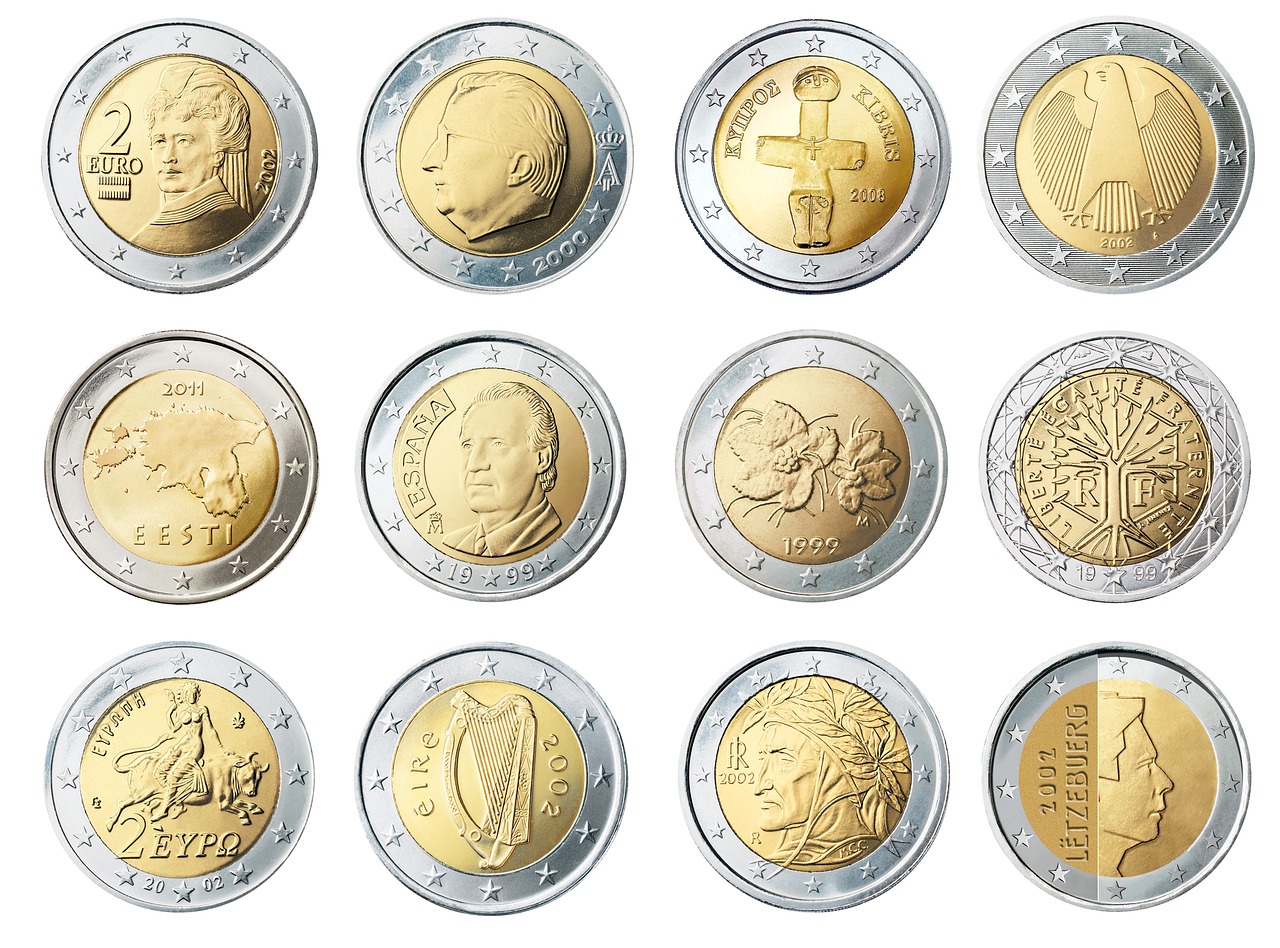
Understanding Currency Fluctuations
Currency fluctuations are a fascinating aspect of the global economy, representing the continuous changes in the value of one currency in relation to another. Imagine a seesaw, where the weight on one side can easily tip the balance of the other. This dynamic can be influenced by a myriad of factors, such as economic indicators, geopolitical events, and even market sentiment. For instance, if a country’s economy is thriving, its currency may strengthen against others, while economic downturns can lead to depreciation. But what exactly causes these fluctuations?
Several key factors contribute to currency fluctuations, including:
- Interest Rates: Central banks adjust interest rates to control inflation and stabilize their economies. When rates rise, it typically attracts foreign capital, leading to a stronger currency.
- Inflation Rates: High inflation can erode purchasing power, causing a currency to lose value relative to others. Conversely, low inflation often signals a stable economy, bolstering confidence in that currency.
- Political Stability: Countries with stable governments and strong economic performance tend to have stronger currencies. Political unrest or uncertainty can lead to currency depreciation.
- Trade Balances: A country that exports more than it imports will generally see an increase in currency value, as foreign buyers need to purchase the local currency for transactions.
Understanding these factors is crucial for investors and traders alike, especially those involved in the cryptocurrency market. The interplay between traditional currencies and digital assets adds another layer of complexity. For example, when the U.S. dollar weakens, investors may flock to cryptocurrencies as an alternative store of value, driving up demand and prices. Conversely, a strong dollar might lead to a decrease in crypto investments as traditional assets become more attractive.
In essence, currency fluctuations are not just numbers on a screen; they represent the underlying health of economies and the sentiments of investors worldwide. As we dive deeper into the relationship between fiat currencies and cryptocurrencies, it becomes evident that these fluctuations can significantly impact market dynamics, trading behaviors, and ultimately, the value of digital assets.

Correlation Between Fiat and Crypto
The relationship between fiat currencies and cryptocurrencies is a fascinating yet complex web that intertwines the realms of traditional finance and digital assets. At first glance, it might seem that these two financial spheres operate independently; however, a closer examination reveals a deep-seated correlation that can significantly influence market trends and investor behavior. So, what exactly drives this connection? Well, it boils down to several key factors, including market sentiment, economic indicators, and the overall health of the global economy.
When fiat currencies experience fluctuations, whether due to economic policies, geopolitical events, or market speculation, the effects can ripple through the crypto market. For instance, if a major fiat currency like the US dollar weakens, investors might seek refuge in cryptocurrencies, perceiving them as a more stable store of value. This shift can lead to a surge in demand for digital assets, consequently driving up their prices. Conversely, a strengthening fiat currency may lead to reduced interest in cryptocurrencies as investors feel more secure in traditional assets. This dynamic creates a constant ebb and flow, akin to the tides, where the strength of one influences the other.
Moreover, the correlation between fiat and crypto is not merely a one-way street. The behavior of cryptocurrencies can also impact fiat currencies. For example, if Bitcoin, the leading cryptocurrency, experiences a significant price surge, it can lead to increased media coverage and public interest in digital assets. This newfound enthusiasm may result in more people investing in cryptocurrencies, which in turn can put pressure on fiat currencies as investors move their assets from traditional to digital. It's a fascinating cycle of influence that keeps both markets on their toes.
To illustrate this relationship further, let's take a look at a simple table that summarizes the potential impacts of fiat currency fluctuations on cryptocurrencies:
| Fiat Currency Movement | Impact on Crypto Market |
|---|---|
| Weakening Fiat Currency | Increased demand for cryptocurrencies as a hedge |
| Strengthening Fiat Currency | Decreased interest in cryptocurrencies |
| Market Volatility | Increased trading volume in crypto markets |
| Economic Instability | Shift towards cryptocurrencies for perceived safety |
In essence, the correlation between fiat and crypto is a delicate dance that reflects broader economic sentiments. Investors often keep a keen eye on currency movements, as these can serve as indicators for potential opportunities or risks in the crypto market. As we navigate through this ever-evolving financial landscape, understanding this relationship becomes crucial for anyone looking to make informed investment decisions.
- How do fiat currency fluctuations affect cryptocurrency prices?
Fiat currency fluctuations can lead to increased or decreased demand for cryptocurrencies, impacting their prices. A weakening fiat currency often drives investors towards crypto as a hedge, while a strengthening fiat may have the opposite effect. - Is there a direct correlation between Bitcoin and fiat currencies?
Yes, Bitcoin often reacts to movements in major fiat currencies, particularly the US dollar, as investors seek to balance their portfolios based on economic conditions. - Can cryptocurrencies influence fiat currency values?
Yes, significant movements in the cryptocurrency market can attract media attention and public interest, potentially impacting the stability and value of fiat currencies.

Market Sentiment and Trading Volume
The world of cryptocurrency is as volatile as a rollercoaster ride, and at the heart of its wild swings lies market sentiment. This sentiment is essentially the mood of the investors, shaped by their feelings, perceptions, and reactions to various events in the financial world. When traditional currencies fluctuate, they don't just affect the forex market; they send ripples through the crypto space as well. Imagine a wave crashing on the shore—each fluctuation in fiat currencies can create a surge or a dip in crypto trading volumes, making it essential to understand this relationship.
When the value of a fiat currency drops, such as when the U.S. dollar weakens, investors might feel a sense of urgency. They could see cryptocurrencies, like Bitcoin or Ethereum, as a safer harbor for their funds, driving up demand and trading volume. Conversely, if the dollar strengthens, traders might flock back to traditional assets, causing crypto trading volumes to dwindle. This tug-of-war between fiat and crypto can be likened to a game of tug-of-war where the direction of the pull can change based on external economic factors.
In fact, market sentiment can be influenced by a variety of factors, including:
- Economic news releases
- Geopolitical events
- Technological advancements in blockchain
- Regulatory changes
Each of these elements can sway investor confidence, leading to fluctuations in trading volume. For instance, a positive jobs report might boost the dollar, causing traders to sell off their crypto holdings, while a negative report could have the opposite effect. This interplay creates a dynamic environment where understanding market sentiment becomes crucial for investors looking to navigate the choppy waters of cryptocurrency trading.
Moreover, social media plays a huge role in shaping market sentiment. Platforms like Twitter and Reddit can ignite a frenzy, causing prices to spike or plummet based on trending discussions. When a major influencer tweets about Bitcoin, for example, it can lead to a surge in trading volume as followers rush to buy or sell. This phenomenon illustrates just how interconnected our digital lives are with financial markets today. The rapid dissemination of information can create a sense of urgency, driving traders to act quickly, often without fully understanding the underlying market conditions.
Ultimately, the relationship between market sentiment and trading volume is a delicate dance influenced by a myriad of factors. As investors become more aware of how currency fluctuations impact their decisions, they must also remain vigilant about the broader economic landscape. By keeping an eye on market sentiment, traders can better position themselves to take advantage of opportunities, whether that means riding the wave of a bullish trend or protecting their investments during a bearish downturn.
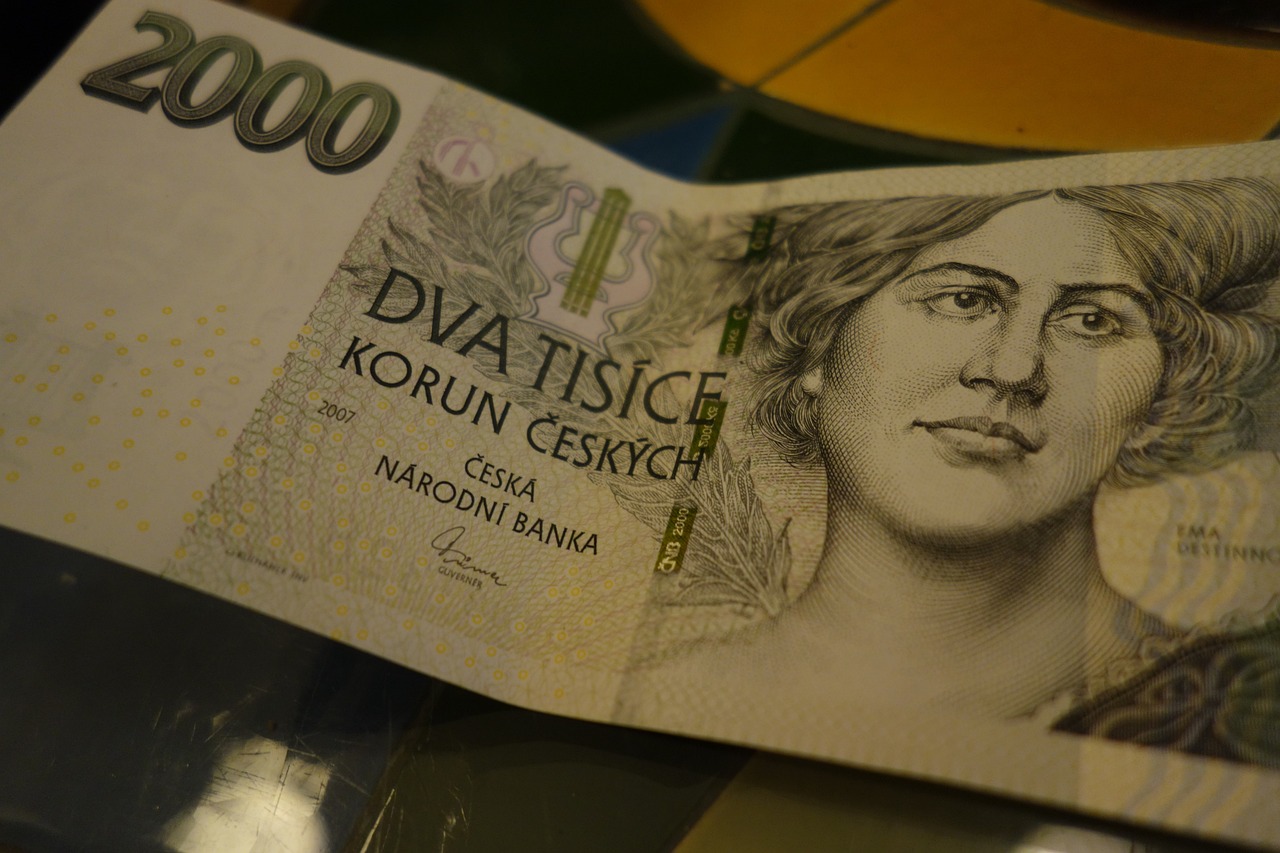
Investor Reactions to Economic Events
In the ever-evolving landscape of finance, economic events play a pivotal role in shaping investor behavior, particularly in the cryptocurrency market. When significant news breaks—be it a change in interest rates, geopolitical tensions, or unexpected inflation reports—investors often find themselves in a state of flux, reassessing their strategies and portfolios. This reaction is not merely a knee-jerk response; it reflects a deeper understanding of how traditional financial principles intertwine with the digital asset space. So, how exactly do these economic events affect investor sentiment in the world of crypto?
To start, let's consider how interest rate changes can send ripples through the crypto market. When central banks announce an increase in interest rates, it typically strengthens the local currency. Investors may feel more inclined to hold onto their fiat assets, leading to a decline in crypto investments. Conversely, if rates are cut, the opposite can occur—investors may flock to cryptocurrencies, seeking alternative stores of value. The psychological impact of these events cannot be overstated; they often trigger a wave of buying or selling that can dramatically influence market prices.
Moreover, geopolitical events—such as trade wars or military conflicts—can create a climate of uncertainty. In times of instability, investors often seek safe havens for their assets. While traditional safe havens like gold are well-known, cryptocurrencies have increasingly been viewed as a modern alternative. For example, during periods of heightened tension, we might see a surge in Bitcoin purchases as investors look to hedge against potential currency devaluation or market crashes. This behavior highlights a fascinating aspect of human psychology: the desire to protect one's wealth, even if it means venturing into the volatile world of digital currencies.
The relationship between economic events and investor reactions can also be illustrated through a simple table that outlines key events and their typical impacts on the crypto market:
| Economic Event | Typical Investor Reaction | Impact on Crypto Market |
|---|---|---|
| Interest Rate Hike | Sell-off of crypto assets | Decrease in demand for cryptocurrencies |
| Interest Rate Cut | Increased investment in crypto | Potential price surge in digital assets |
| Geopolitical Tension | Flight to safety in crypto | Increased buying pressure, especially for Bitcoin |
| High Inflation Rates | Shift towards cryptocurrencies | Potential rise in crypto valuations |
In addition to these reactions, it's crucial to acknowledge the role of social media and news outlets in shaping investor sentiments. A single tweet from a prominent figure or a headline from a major news organization can trigger a frenzy, sending prices soaring or plummeting in mere minutes. This phenomenon underscores the interconnectedness of traditional finance and the crypto space, where information flows rapidly and can lead to immediate market reactions.
Ultimately, understanding how economic events influence investor reactions is vital for anyone involved in cryptocurrency trading. By keeping a finger on the pulse of global economic indicators and their implications, investors can make more informed decisions, navigating the tumultuous waters of the crypto market with greater confidence. In a world where change is the only constant, staying ahead of the curve is not just advantageous; it's essential for long-term success.
- How do economic events affect cryptocurrency prices?
Economic events can lead to shifts in investor sentiment, impacting buying and selling behaviors, which in turn affects cryptocurrency valuations. - What is the relationship between interest rates and cryptocurrencies?
Generally, rising interest rates can decrease the attractiveness of cryptocurrencies, while falling rates may encourage investment in digital assets. - Can geopolitical events influence cryptocurrency investments?
Yes, geopolitical tensions often lead investors to seek alternative assets like cryptocurrencies, viewing them as safe havens.
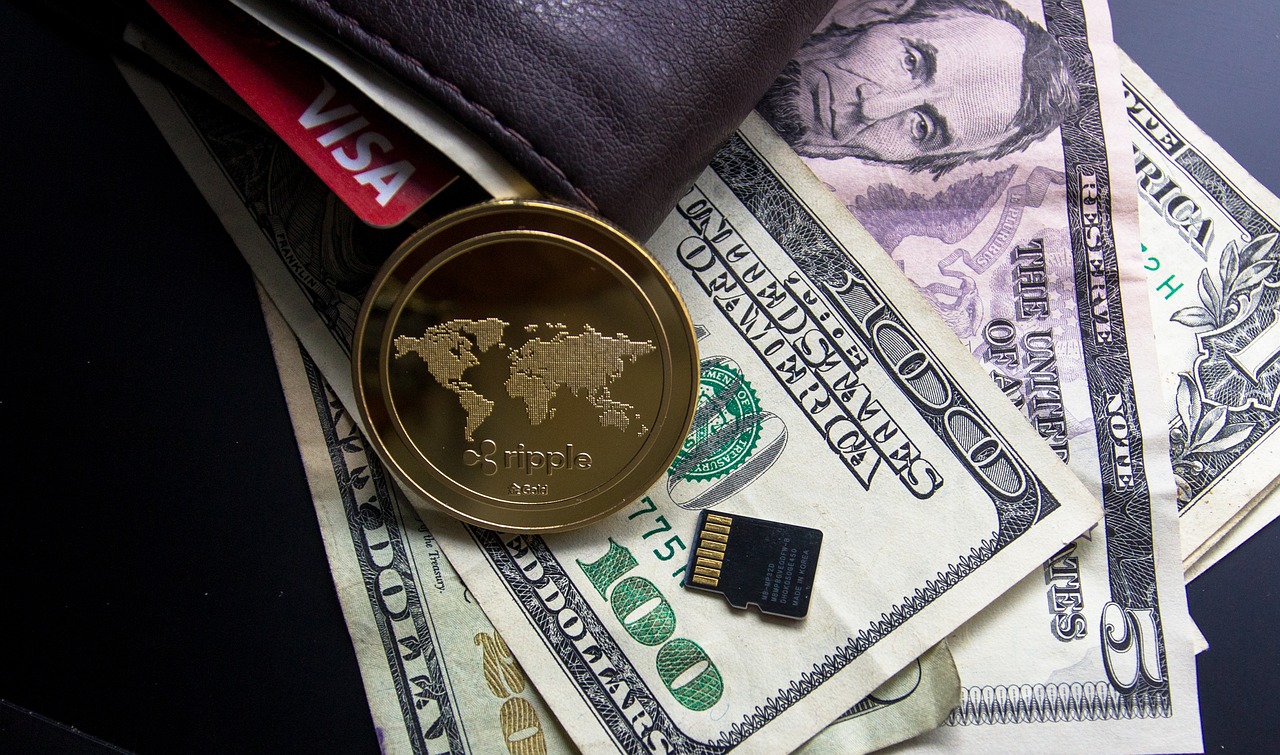
Impact on Altcoins vs. Bitcoin
When it comes to the world of cryptocurrencies, Bitcoin often stands as the king, but what about the other players in the game? Altcoins, or alternative coins, have their unique dynamics and often behave differently in response to currency fluctuations. While Bitcoin is frequently viewed as a digital gold, altcoins can be likened to a basket of diverse assets, each reacting to market changes in their own way.
For instance, during periods of economic uncertainty, Bitcoin tends to attract a lot of attention as a safe haven. Investors often flock to it, which can lead to price increases. Conversely, altcoins might not enjoy the same level of confidence. In fact, they can experience significant volatility, with prices swinging wildly based on market sentiment. This divergence in behavior can be attributed to several factors:
- Market Maturity: Bitcoin has a more established market presence and a larger market cap compared to most altcoins, which makes it less susceptible to extreme price movements.
- Liquidity: Bitcoin generally has higher liquidity, meaning that larger trades can occur without drastically affecting its price. Altcoins, on the other hand, may struggle with liquidity, leading to sharper price changes.
- Investor Sentiment: The perception of Bitcoin as a store of value can lead to increased demand during fiat currency fluctuations, while altcoins may suffer from negative sentiment if investors seek safety in Bitcoin.
Moreover, the reaction of altcoins to currency fluctuations can also depend on their specific use cases and the communities supporting them. For example, stablecoins like USDT or USDC are designed to maintain a stable value against fiat currencies, making them less reactive to fluctuations. On the other hand, speculative altcoins can experience wild price swings based on market trends or trends in Bitcoin's price.
To illustrate this impact, consider the following table comparing Bitcoin and a few popular altcoins during a recent period of fiat currency fluctuation:
| Cryptocurrency | Price Change (%) | Market Reaction |
|---|---|---|
| Bitcoin (BTC) | +10% | Increased demand as a safe haven |
| Ethereum (ETH) | +5% | Moderate growth, driven by DeFi interest |
| Ripple (XRP) | -3% | Decline due to regulatory concerns |
| Litecoin (LTC) | +2% | Stable performance amid volatility |
As shown in the table, Bitcoin's ability to attract investors during times of uncertainty stands in stark contrast to the mixed reactions of altcoins. While some altcoins may thrive under certain conditions, others can falter, highlighting the importance of understanding the unique characteristics of each asset.
In conclusion, the impact of currency fluctuations on Bitcoin and altcoins is not uniform. Investors must be aware of these differences and consider how their portfolios are positioned in relation to both Bitcoin and altcoins. This understanding can lead to more informed investment decisions and better risk management strategies in the ever-evolving cryptocurrency landscape.
Q1: Why does Bitcoin react differently to currency fluctuations compared to altcoins?
A1: Bitcoin is often viewed as a safe haven asset, attracting investors during times of economic uncertainty, while altcoins can be more volatile and influenced by different market factors.
Q2: Are altcoins a good investment during currency fluctuations?
A2: It depends on the specific altcoin and market conditions. Some altcoins may perform well, while others may not. It's essential to research each asset individually.
Q3: Can stablecoins be affected by currency fluctuations?
A3: Stablecoins are designed to maintain a stable value against fiat currencies, so they are less affected by fluctuations. However, they can still experience minor changes based on market sentiment.
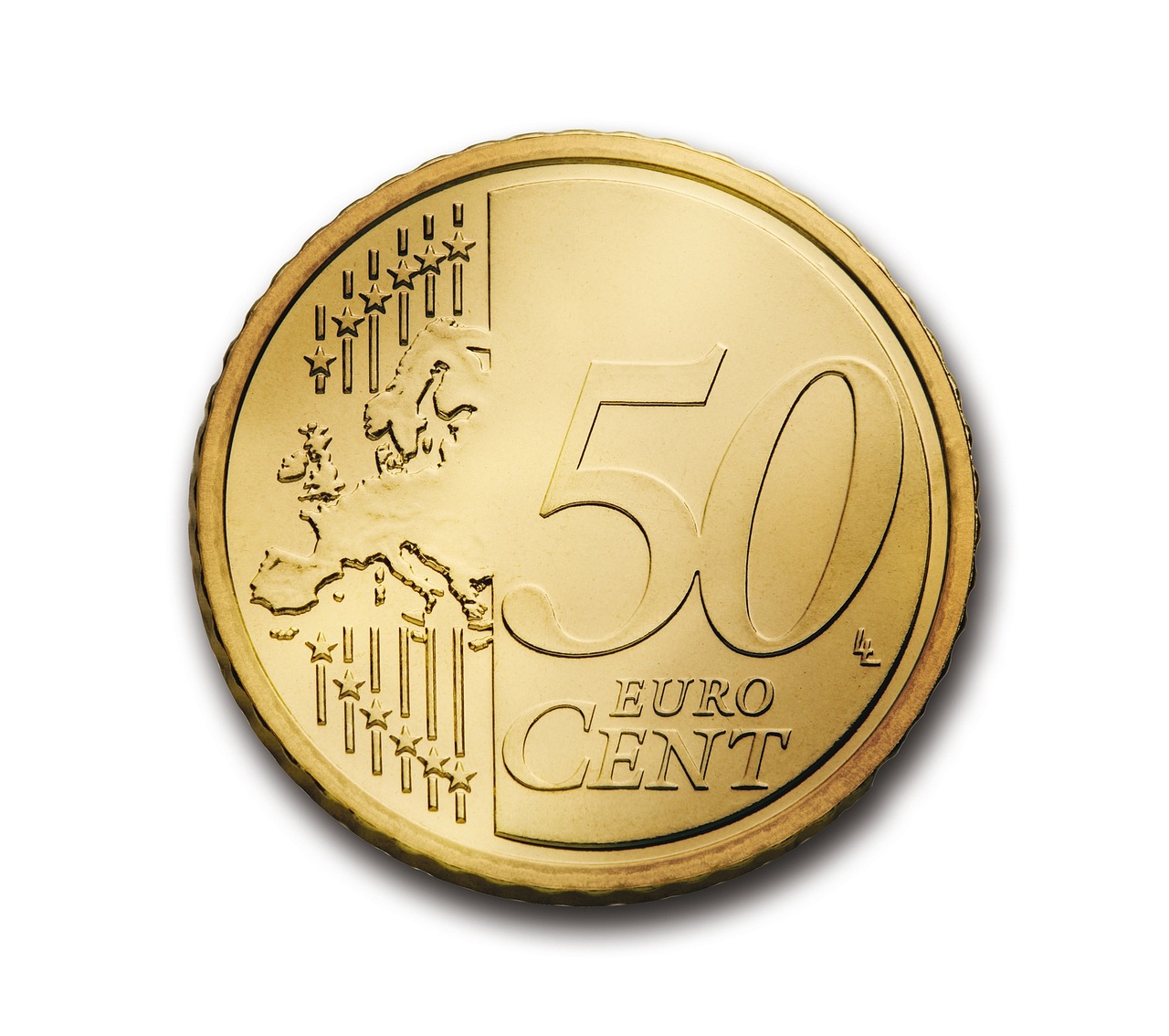
Hedging Strategies for Investors
In the unpredictable world of cryptocurrency, where prices can swing wildly in a matter of hours, hedging strategies become essential for investors looking to protect their portfolios. Just like a seasoned sailor knows to adjust their sails with changing winds, savvy investors must adapt their strategies in response to market fluctuations. So, what exactly are these strategies, and how can they help you navigate the tumultuous waters of crypto trading?
One of the most popular hedging strategies involves the use of derivatives, such as futures and options. These instruments allow investors to lock in prices for future transactions, providing a safety net against adverse price movements. For example, an investor who holds Bitcoin might enter into a futures contract to sell Bitcoin at a predetermined price. If the market crashes, they can still sell their Bitcoin at the higher price, effectively minimizing their losses. However, it's crucial to approach derivatives with caution, as they can also amplify losses if the market moves against you.
Another common strategy is diversification. By spreading investments across various cryptocurrencies and even traditional assets, investors can reduce their exposure to any single asset's volatility. Just as you wouldn't put all your eggs in one basket, diversifying your portfolio can help mitigate risks. Consider allocating a portion of your investments to stablecoins, which are pegged to fiat currencies, to provide a buffer against market swings.
Moreover, some investors turn to stablecoins as a hedge. These cryptocurrencies maintain a stable value by being tied to a reserve of assets, typically a fiat currency like the US dollar. When market conditions become shaky, converting a portion of your holdings into stablecoins can preserve your capital while you wait for a more favorable market environment. This strategy is akin to having a safety net, allowing you to remain in the crypto space without exposing yourself to unnecessary risk.
Lastly, utilizing stop-loss orders is another effective way to manage risk. A stop-loss order automatically sells your assets when they reach a certain price, helping you limit potential losses. Imagine you're on a rollercoaster; a stop-loss order is like the safety harness that keeps you secure, preventing you from falling into a pit of despair when the market takes a nosedive.
In summary, hedging strategies are vital for investors aiming to safeguard their investments in the volatile crypto market. By employing derivatives, diversifying portfolios, utilizing stablecoins, and setting stop-loss orders, investors can navigate the unpredictable seas of cryptocurrency with greater confidence. Remember, while these strategies can help mitigate risks, they are not foolproof. Always conduct thorough research and consider your risk tolerance before diving into the world of crypto.
- What is a hedging strategy?
A hedging strategy is an investment approach designed to reduce the risk of adverse price movements in an asset. It often involves taking an offsetting position in a related security.
- How do derivatives work in crypto?
Derivatives are financial contracts whose value is derived from the performance of an underlying asset, such as Bitcoin. They can be used to hedge against price fluctuations.
- What are stablecoins?
Stablecoins are cryptocurrencies designed to maintain a stable value, often pegged to a fiat currency, providing a safe haven during market volatility.
- Is diversification always effective?
While diversification can reduce risk, it doesn't eliminate it entirely. Market conditions can affect all assets, and diversification should be part of a broader risk management strategy.
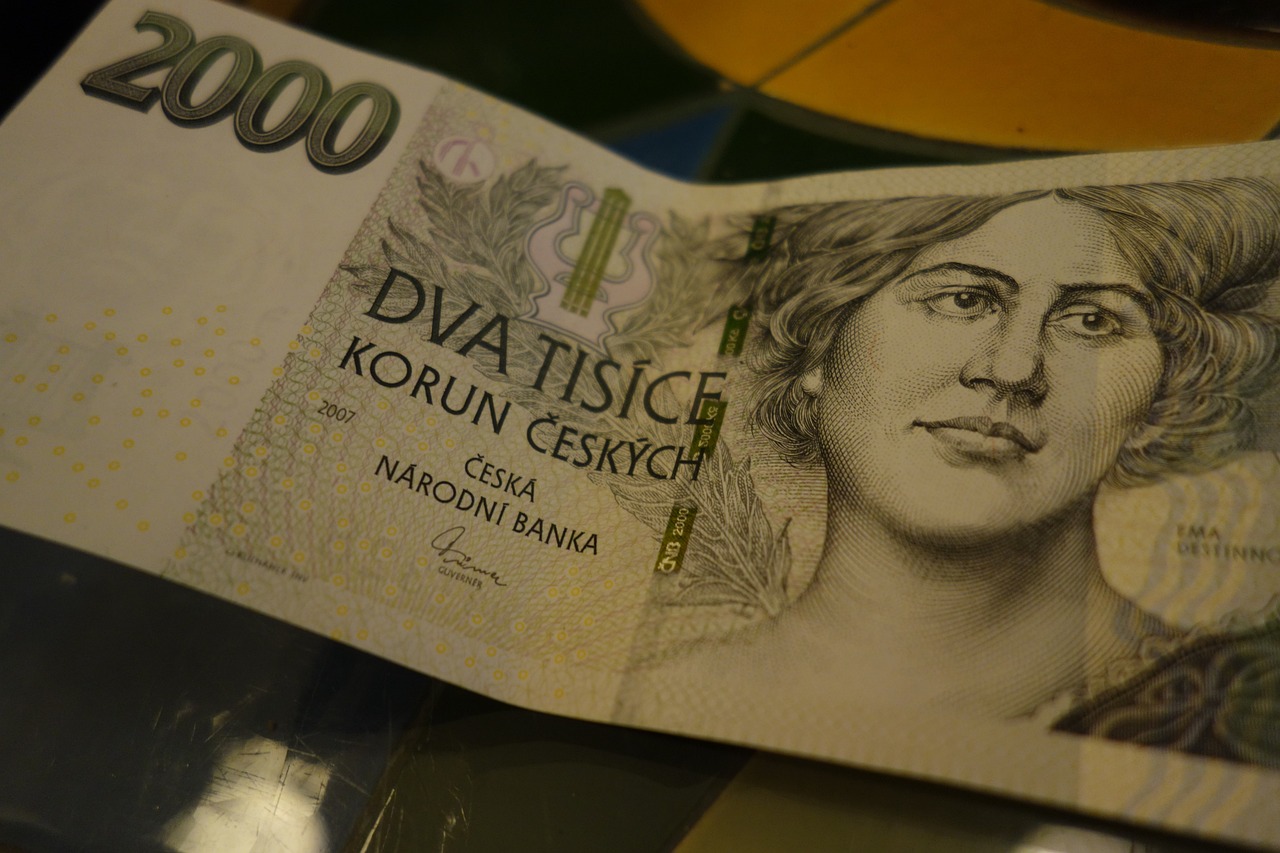
Global Economic Indicators
When we talk about , we're diving into the metrics that help us understand economic health across countries. These indicators, such as inflation rates, GDP growth, and unemployment rates, are like the pulse of the economy. They not only show us how well an economy is performing but also provide insights into how these economic conditions can impact various financial markets, including cryptocurrencies. For instance, when inflation rises, it often leads investors to seek alternative assets, like cryptocurrencies, which they perceive as a hedge against declining purchasing power.
One of the most critical indicators is the Consumer Price Index (CPI), which measures the average change over time in the prices paid by consumers for goods and services. A rising CPI indicates increasing inflation, which can prompt investors to shift their focus towards assets that traditionally hold value better during inflationary periods, such as Bitcoin and other cryptocurrencies. This shift is not just a reactionary measure; it reflects a broader trend where investors look for stability in the face of economic uncertainty.
Another significant indicator is the Gross Domestic Product (GDP), which measures the total value of goods and services produced in a country. A growing GDP often signifies a healthy economy, which can lead to increased confidence in traditional currencies. However, if the GDP growth is sluggish, it may lead investors to explore cryptocurrencies as a more lucrative investment alternative, especially if they believe that traditional markets are not offering substantial returns.
To illustrate the relationship between these indicators and cryptocurrency prices, let's take a look at the following table:
| Economic Indicator | Impact on Cryptocurrency |
|---|---|
| Inflation Rate | Increased interest in cryptocurrencies as a hedge against inflation. |
| GDP Growth | Positive growth may strengthen fiat currencies, potentially reducing crypto interest. |
| Unemployment Rate | Higher unemployment can lead to economic distress, increasing crypto investments. |
It's also important to consider how interest rates play a role in shaping these indicators. Central banks adjust interest rates to control inflation and stabilize the economy. When interest rates are low, borrowing becomes cheaper, which can stimulate economic growth. However, low rates can also lead to increased investment in riskier assets, including cryptocurrencies, as investors search for higher returns. Conversely, when interest rates rise, the opportunity cost of holding non-yielding assets like Bitcoin may deter some investors, leading to potential price drops.
In summary, global economic indicators are vital for understanding the broader economic landscape and its implications for cryptocurrency investments. By keeping an eye on these indicators, investors can make more informed decisions, navigating the ever-changing tides of the financial markets.
- What are global economic indicators? - These are metrics that provide insights into the economic health of countries, influencing investment decisions across various markets.
- How do inflation rates affect cryptocurrency? - Rising inflation often leads investors to cryptocurrencies as a hedge against declining purchasing power.
- What is the significance of GDP growth? - GDP growth indicates a healthy economy, which can influence investor confidence in traditional currencies and their willingness to invest in cryptocurrencies.
- How do interest rates impact crypto valuations? - Changes in interest rates can affect the attractiveness of cryptocurrencies compared to traditional investments, influencing market dynamics.

Inflation and Its Effects on Crypto
Inflation is like a sneaky thief that gradually steals your purchasing power. When prices rise, the value of your hard-earned money diminishes, and that’s when many investors start to look for alternatives to protect their assets. Enter cryptocurrencies! As inflation continues to creep up, more and more people are turning to digital currencies as a hedge against the declining value of fiat money. But how exactly does inflation impact the world of crypto?
First off, when inflation rates soar, traditional fiat currencies often take a hit. Investors become anxious about the future of their cash holdings, prompting them to seek refuge in assets that are perceived as more stable or resistant to inflation. This is where cryptocurrencies, particularly Bitcoin, shine. Bitcoin is often dubbed “digital gold” because, like gold, it has a limited supply. With only 21 million Bitcoins ever to be mined, many see it as a safeguard against inflationary pressures. As demand for Bitcoin increases, so does its price, creating a ripple effect throughout the crypto market.
Moreover, inflation can lead to a shift in investor psychology. When people feel the pinch of rising costs, they might become more risk-averse, steering their investments towards assets that are less likely to lose value. This behavior can create a surge in trading volumes for cryptocurrencies, as investors flock to digital assets that they believe will hold their value better than traditional currencies. In fact, a recent study showed that during periods of high inflation, trading volumes for Bitcoin and other cryptocurrencies increased significantly, highlighting the growing trend of using crypto as a hedge.
To illustrate this point, let’s take a look at a simple comparison of inflation rates and Bitcoin prices over the past few years:
| Year | Inflation Rate (%) | Bitcoin Price (USD) |
|---|---|---|
| 2019 | 1.8 | 3,800 |
| 2020 | 1.2 | 7,200 |
| 2021 | 7.0 | 41,000 |
| 2022 | 8.0 | 19,000 |
As you can see, there’s a noticeable trend where rising inflation rates correlate with increased interest in Bitcoin, despite its price volatility. This relationship underscores the notion that during uncertain economic times, investors are increasingly viewing cryptocurrencies as a viable alternative to traditional investments.
However, it’s essential to note that while inflation can drive up interest in cryptocurrencies, it can also lead to market volatility. As more investors flock to crypto, prices can become inflated, leading to potential bubbles. The crypto market is notorious for its rapid price swings, and inflation can exacerbate these fluctuations, making it a double-edged sword for investors.
In conclusion, the effects of inflation on cryptocurrencies are multifaceted. While inflation can drive interest and investment into the crypto space, it can also lead to increased volatility. As the economic landscape continues to evolve, understanding the dynamics between inflation and crypto will be crucial for investors looking to navigate this exciting yet unpredictable market.
- What is the relationship between inflation and cryptocurrency? Inflation often leads investors to seek alternative assets like cryptocurrencies to protect their purchasing power.
- How does Bitcoin act as a hedge against inflation? Bitcoin has a capped supply of 21 million coins, making it scarce and a potential store of value during inflationary periods.
- Can inflation cause volatility in the crypto market? Yes, while inflation can drive interest in cryptocurrencies, it can also lead to rapid price fluctuations.
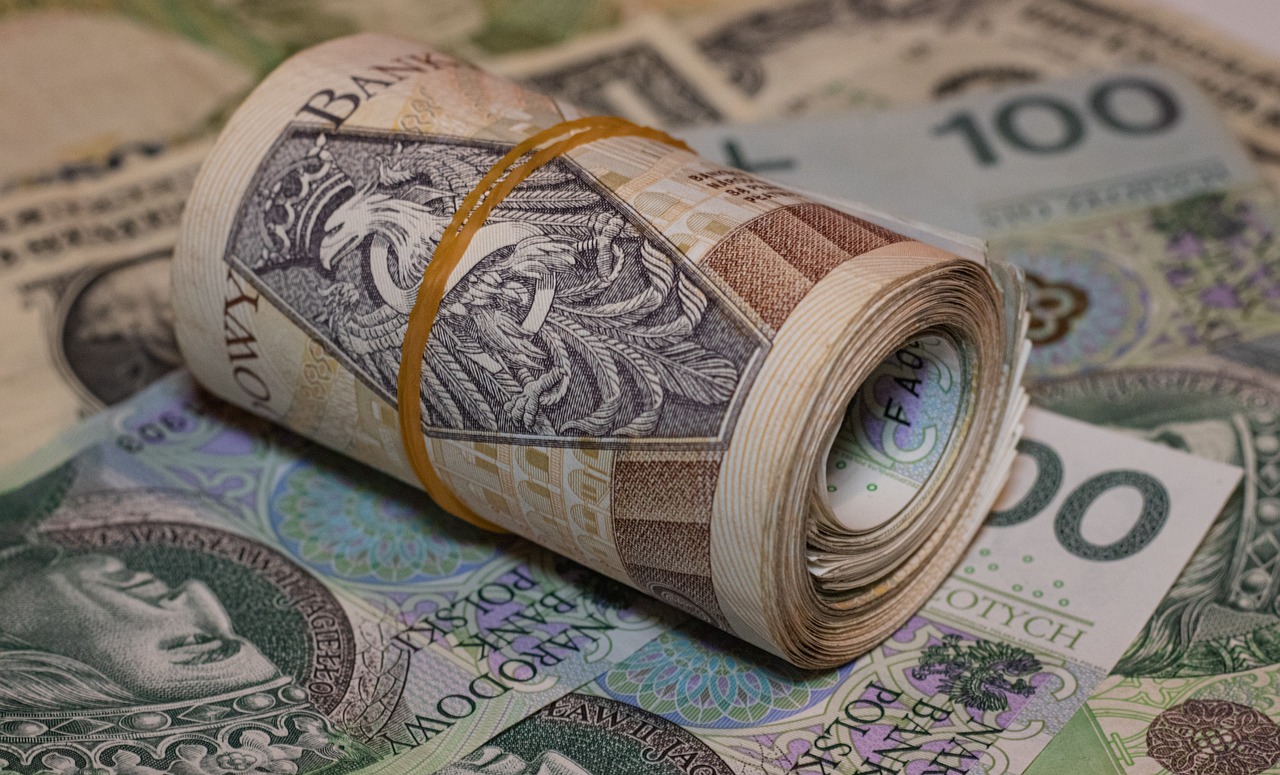
Interest Rates and Crypto Valuation
Interest rates are like the heartbeat of the economy; when they rise or fall, they send ripples throughout financial markets, including the cryptocurrency space. When central banks adjust interest rates, they are essentially signaling their economic outlook, and this can have profound implications for how investors view digital assets. For instance, when interest rates are low, traditional savings accounts and bonds yield minimal returns, making cryptocurrencies, which can offer higher potential returns, more attractive. Conversely, when interest rates climb, the allure of traditional investments increases, potentially diverting funds away from the crypto market.
To illustrate this relationship further, consider the following scenario: imagine a world where interest rates are at an all-time low. Investors, in search of better returns, might flock to cryptocurrencies, driving up prices and increasing market activity. On the flip side, if interest rates spike unexpectedly, the fear of losing money in volatile assets like Bitcoin and Ethereum could lead to panic selling, resulting in a sharp decline in crypto valuations.
Moreover, the impact of interest rates on crypto valuation is not uniform across the board. Different cryptocurrencies respond in unique ways based on their use cases and market perception. For instance, Bitcoin, often viewed as digital gold, may hold its value better during periods of rising interest rates compared to altcoins, which are typically seen as riskier investments. This divergence can create a fascinating dynamic in the market, where some coins thrive while others languish.
Here's a quick overview of how interest rates might influence various aspects of crypto valuation:
- Investment Flow: Higher interest rates may lead to a decrease in investment flow into cryptocurrencies as investors seek safer, interest-bearing assets.
- Market Sentiment: Rising interest rates can create uncertainty, leading to bearish sentiment in the crypto market.
- Speculative Trading: Lower interest rates can encourage speculative trading in cryptocurrencies, as investors look for higher returns.
In summary, the relationship between interest rates and cryptocurrency valuation is intricate and multifaceted. As investors navigate this landscape, understanding how these economic indicators interact with digital assets can be crucial for making informed decisions. Whether you're a seasoned trader or a curious newcomer, keeping an eye on interest rate trends can provide valuable insights into potential market movements.
- How do interest rates affect cryptocurrency prices? Interest rates influence investment behavior; lower rates can lead to increased interest in cryptocurrencies, while higher rates may encourage investment in traditional assets.
- What happens to Bitcoin when interest rates rise? Typically, rising interest rates may lead to a decline in Bitcoin prices as investors seek safer, interest-bearing investments.
- Are all cryptocurrencies affected equally by interest rate changes? No, different cryptocurrencies respond differently; Bitcoin may hold value better than riskier altcoins during rate hikes.
Frequently Asked Questions
- What are currency fluctuations?
Currency fluctuations refer to the changes in the value of one currency compared to another. These changes can be influenced by various factors, including economic indicators, political stability, and market sentiment. Understanding these fluctuations is crucial for investors, especially in the realm of cryptocurrencies, as they can significantly impact trading behaviors and asset valuations.
- How do currency fluctuations affect cryptocurrency prices?
Currency fluctuations can have a profound impact on cryptocurrency prices. When fiat currencies strengthen or weaken, it can alter investor sentiment and trading volume in the crypto market. For example, if a major currency depreciates, investors may flock to cryptocurrencies as a safer store of value, driving up prices. Conversely, a strong currency might lead to decreased interest in digital assets.
- What role does market sentiment play in crypto trading?
Market sentiment is a key driver of trading volume in the cryptocurrency market. When currency fluctuations create uncertainty, investor confidence can waver, leading to increased volatility. Positive sentiment can boost trading activity, while negative sentiment can cause panic selling. Understanding how sentiment shifts in response to economic events can help investors make informed decisions.
- How do economic events influence investor reactions in the crypto market?
Economic events, such as changes in interest rates or geopolitical tensions, can lead to significant currency fluctuations. These events often trigger immediate reactions from investors, who may adjust their portfolios based on perceived risks and opportunities. For instance, a rise in interest rates might encourage investors to move funds into cryptocurrencies as a hedge against inflation.
- Do all cryptocurrencies respond the same way to currency fluctuations?
No, different cryptocurrencies react differently to currency fluctuations. Bitcoin, often seen as a digital gold, may behave differently than altcoins, which can be more volatile. Factors such as market capitalization, investor sentiment, and specific use cases can all influence how individual cryptocurrencies respond to changes in fiat currencies.
- What hedging strategies can investors use in the crypto market?
Investors can employ various hedging strategies to protect their investments from currency fluctuations. Common methods include diversifying their portfolios with a mix of cryptocurrencies, using options and futures contracts, or investing in stablecoins that are pegged to fiat currencies. These strategies can help mitigate risks and stabilize returns in a volatile market.
- How do global economic indicators affect cryptocurrency prices?
Global economic indicators, such as inflation rates and GDP growth, play a significant role in shaping currency values and, by extension, cryptocurrency prices. High inflation may drive investors toward cryptocurrencies as a hedge, while strong economic growth can bolster confidence in traditional currencies, impacting crypto valuations. Keeping an eye on these indicators is essential for any crypto investor.
- What is the relationship between inflation and cryptocurrencies?
Inflation erodes purchasing power, leading many investors to seek alternative assets like cryptocurrencies. As inflation rises, interest in digital currencies can increase, often resulting in higher valuations. This trend highlights the appeal of cryptocurrencies as a potential safeguard against inflationary pressures in traditional financial markets.
- How do interest rates impact the attractiveness of cryptocurrencies?
Interest rates are a crucial factor in determining the attractiveness of cryptocurrencies compared to traditional investments. When interest rates are low, the opportunity cost of holding cryptocurrencies decreases, making them more appealing. Conversely, rising interest rates can make traditional assets more attractive, potentially leading to reduced demand for cryptocurrencies.



















